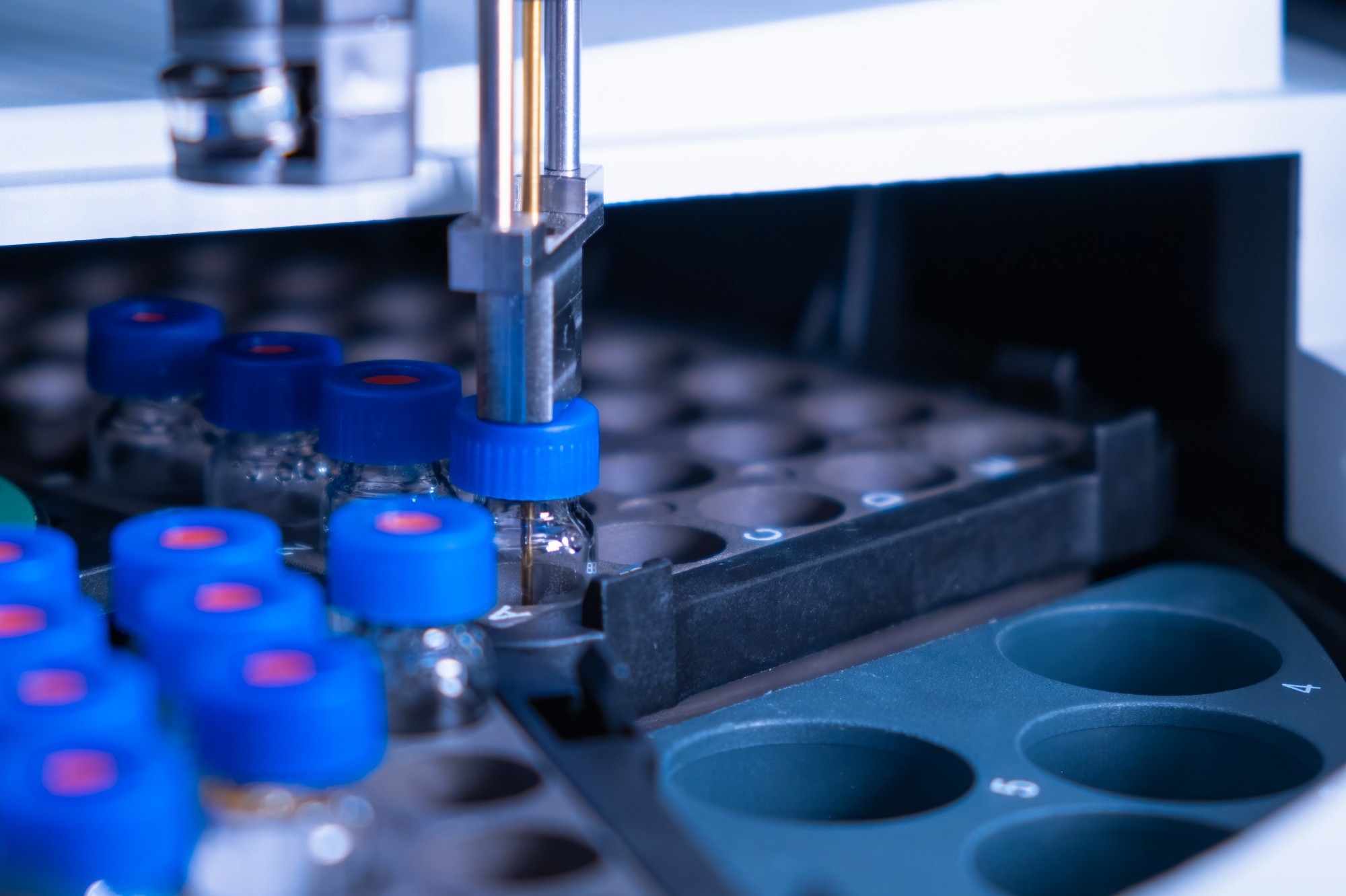Small molecules are the foundation of all physiological processes in life, and understanding their targets is important for determining their pharmacodynamics, which is essential for efficient drug discovery.
One of the most innovative methods in chemical biology that has helped in the non-selective identification of unknown small-molecule targets is chemical proteomics.
In a recent review published in Biology, Chinese researchers discussed the various chemical proteomics methods with relevant examples. They highlighted the role of chemical proteomics in discovering novel drugs and drug safety evaluations.
 Study: Therapeutic Target Identification and Drug Discovery Driven by Chemical Proteomics. Image Credit: Vladimka production/Shutterstock.com
Study: Therapeutic Target Identification and Drug Discovery Driven by Chemical Proteomics. Image Credit: Vladimka production/Shutterstock.com
Small Molecules and Targets
Endogenous small molecules produced within the body and exogenous small molecules obtained from external sources are vital to human life because they regulate physiological functions and health.
Endogenous small molecules produced through metabolic processes, as well as those produced by microbiota in the gut, contribute to maintaining homeostasis. External small molecules can have both beneficial and detrimental effects.
Pharmaceuticals are essential exogenous small molecules required when the internal homeostasis and equilibrium between the body's endogenous small molecules are disrupted.
Synthetic exogenous small molecules can sometimes mimic endogenous small molecule activity and interact with protein targets in the body, resulting in the restoration of body function regulation. Naturally occurring exogenous small molecules can also interact with protein targets in the body and modulate biological pathways.
Therefore, determining the molecular mechanisms of diseases and identifying targets for small molecules through drug discovery is essential for treating and preventing diseases.
Drug discovery mainly consists of identifying therapeutic targets as druggable or non-druggable, with the former type having binding sites of small molecules and the latter type lacking accessible small molecule bindings sites.
Target-oriented drug discovery is essential for preventing loss of efficacy and off-target effects where small molecules interact with unintended targets.
Chemical proteomics is a method that allows high-throughput target identification without the high rate of false positives, unlike other methods such as affinity chromatography and even chemical genomics.
Chemical Proteomics
Chemical proteomics involves probe-based and probe-free methods. Probe-based chemical proteomics uses chemical probes to enrich molecular probes from tissue or cell lysates.
The process begins with designing the probes and synthesizing them, followed by using affinity chromatography to capture and separate the potential targets and then using mass spectrometry to identify them.
Some of the types of probes used for molecular enrichment and fluorescence imaging include immobilized probes, activity-based probes, and photoaffinity probes. Immobilized probes include inert agarose or magnetic mead matrices that can bond to small molecules and isolate them covalently.
Activity-based probes use reporter groups for enrichment and detection. However, the reporter groups present potential problems of altering compound activity, impeding binding due to large size and cell toxicity.
Photoaffinity probes use photoreactive groups that do not disrupt the non-covalent interactions within the cell and form covalent bonds when activated with light.
Activity-based protein profiling, which explores the enzymatic activity of protein families, and compound-centric chemical proteomics, which examines the molecular mechanisms using strong affinity interactions, are both part of probe-based chemical proteomics.
On the other hand, probe-free chemical proteomics uses biophysical alterations in protein structure and conformations to identify small-molecule targets.
This approach includes methods such as thermal proteome profiling, SPROX or stability of proteins from rates of oxidation, DARTS or drug affinity responsive target stability, and target-responsive accessibility profiling or TRAP.
Target Identification and Off-Target Effects
The review also discussed the processes involved in identifying target proteins for small metabolite molecules and the various advancements that have enhanced the accuracy and efficiency of determining the protein targets for the small molecules produced through lipid and carbohydrate metabolism.
The researchers discussed the role of host and microbe interactions in health and the impact of microbiome imbalance or disruptions in immune and metabolic functions.
They examined various studies that explored the role of small molecules secreted by the human microbiota in altering protein function and metabolic pathways.
Chemical proteomics methods were also utilized in these studies to identify the protein targets and precise mechanisms of microbiome-secreted small metabolite molecules.
The study also discussed the protein targets and action mechanisms of synthetic and naturally occurring small-molecule drugs. These included synthetic drugs such as auranofin and methotrexate used to prevent tumor cell proliferation and growth and the anti-cancer mechanisms of the type 2 diabetes medication metformin.
The continued use of various small-molecule drugs despite their incomplete annotation has also resulted in some off-target effects and drug resistance.
Although the drug discovery process includes large-scale screening to identify potential side effects, the process cannot cover all possible side effects, especially since drug behavior in vivo does not mimic the in vitro behavior.
The review discussed some examples of off-target effects of some drugs, including the serendipitous discovery of beneficial off-target effects that were then used to treat other diseases.
Conclusions
Overall, this comprehensive review showed that the identification of protein targets of small molecules in the drug discovery process continues to be crucial and challenging, but advances in chemical proteomics are gradually helping overcome these bottlenecks.
Furthermore, integrating chemical proteomics with emerging molecular networks such as transcriptomics and metabolomics is believed to enlarge the scope of protein function mapping and improve the comprehensive identification of small-molecule targets.
Journal reference:
-
Zou, M., Zhou, H., Gu, L., Zhang, J., & Fang, L. (2024). Therapeutic Target Identification and Drug Discovery Driven by Chemical Proteomics. Biology, 13(8). doi:10.3390/biology13080555. https://www.mdpi.com/2079-7737/13/8/555